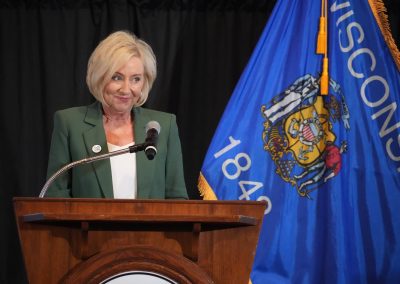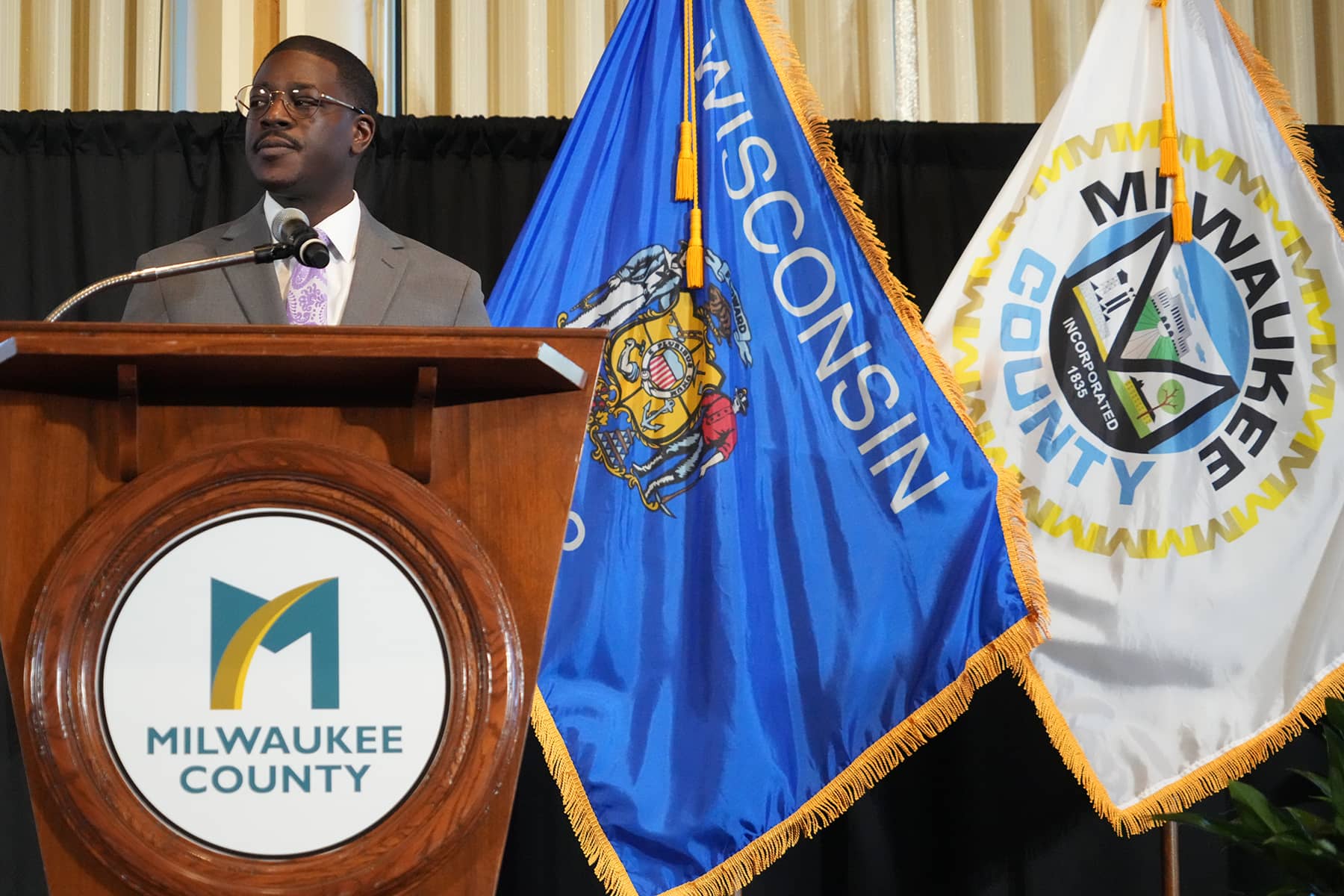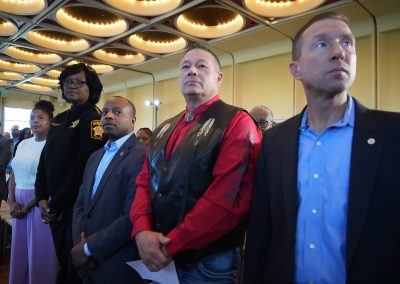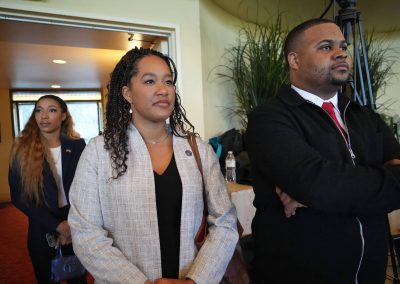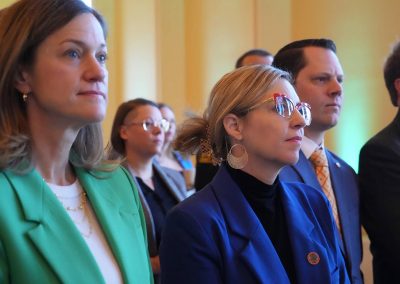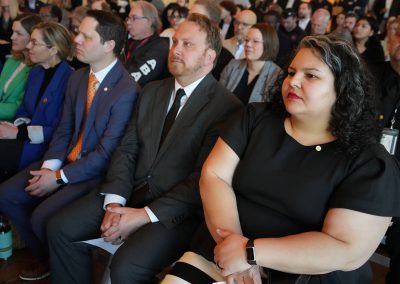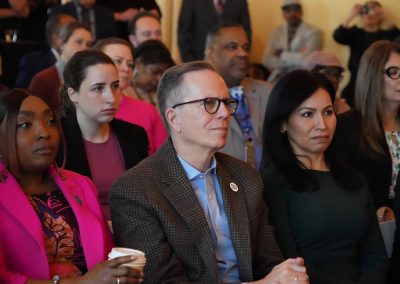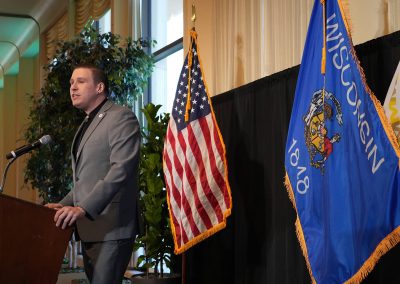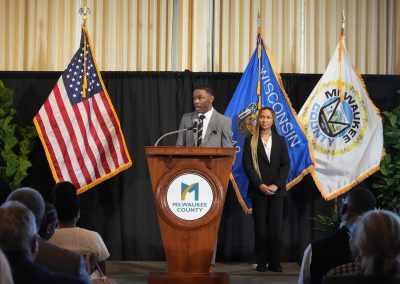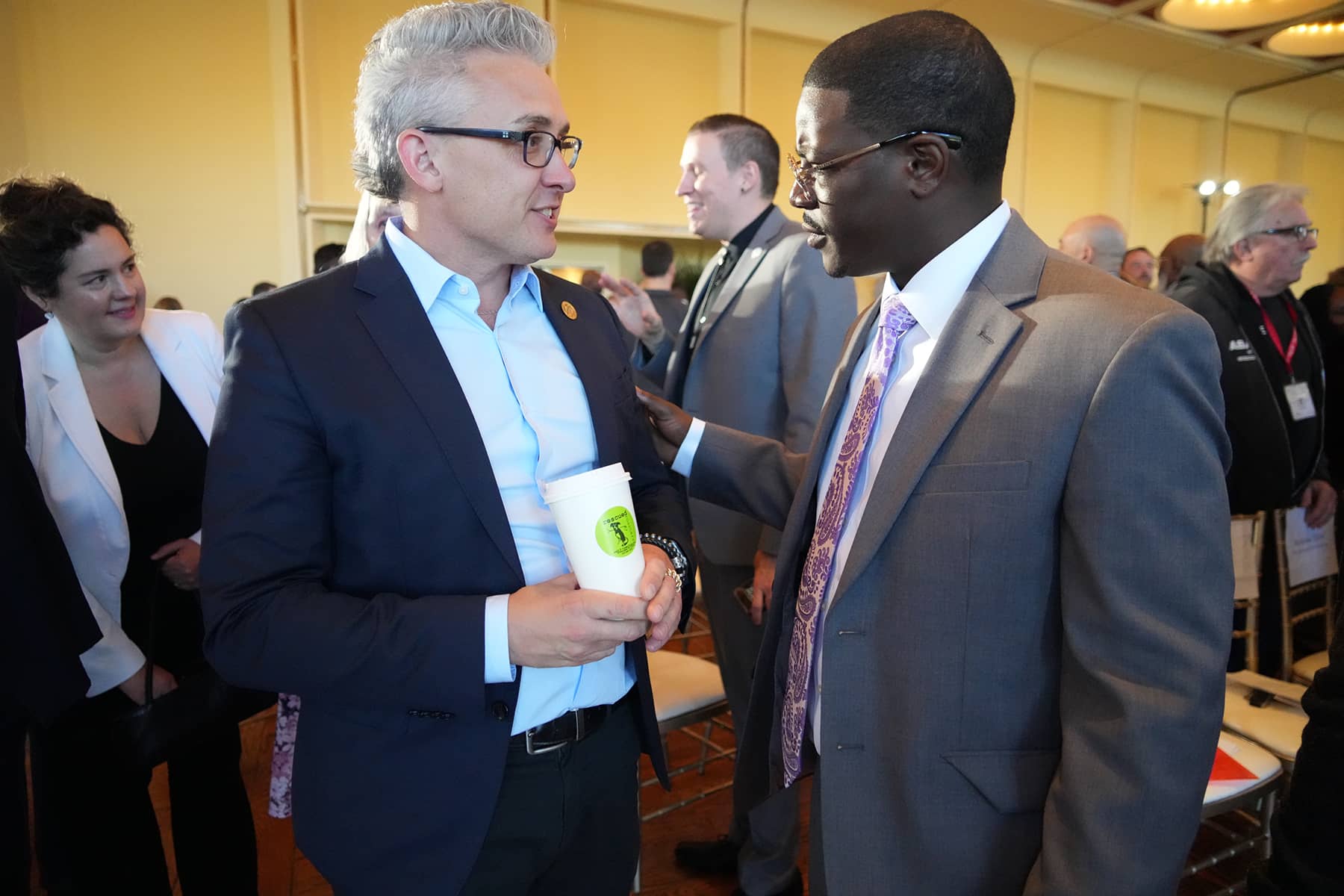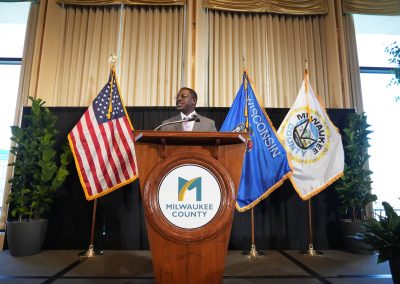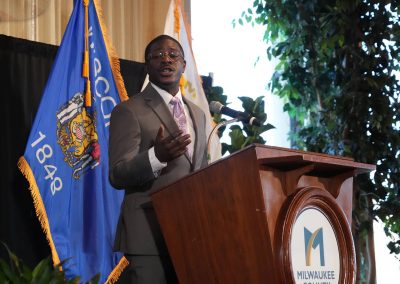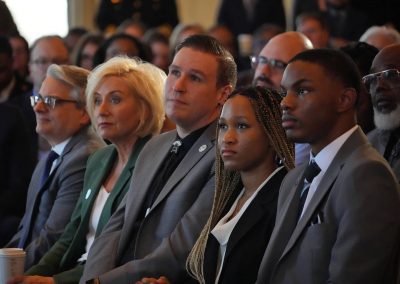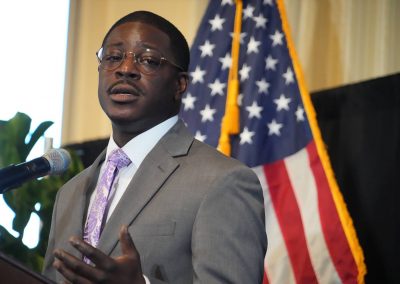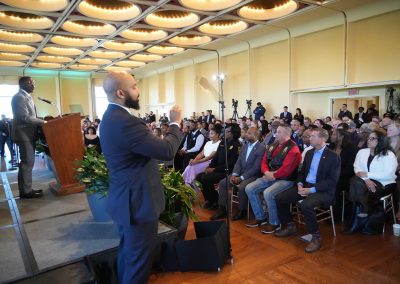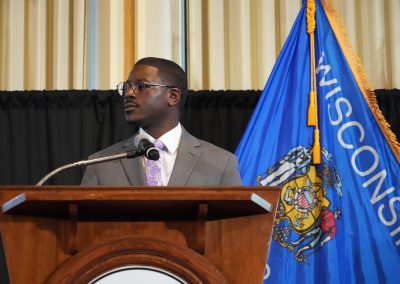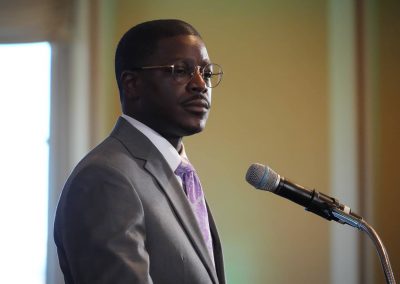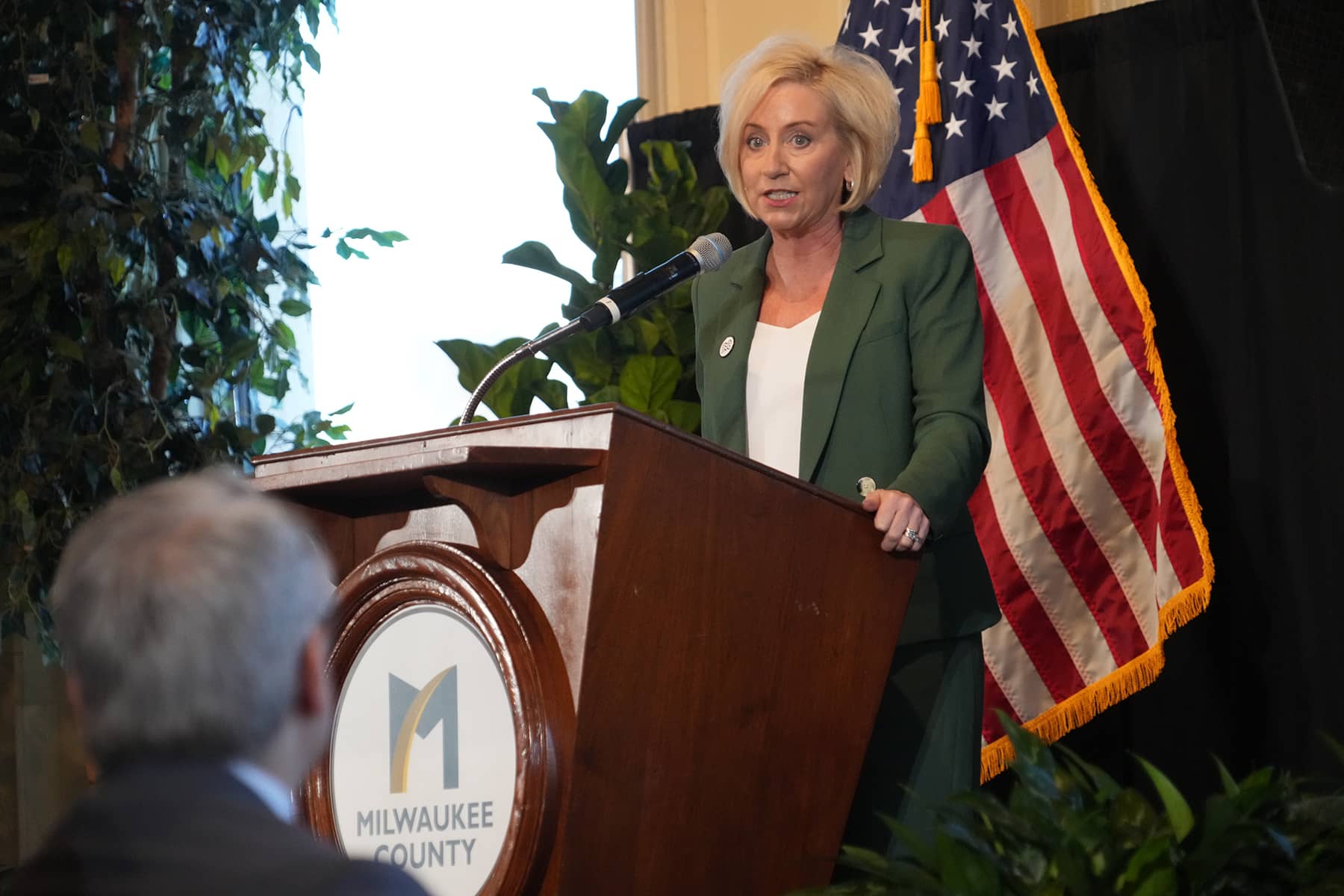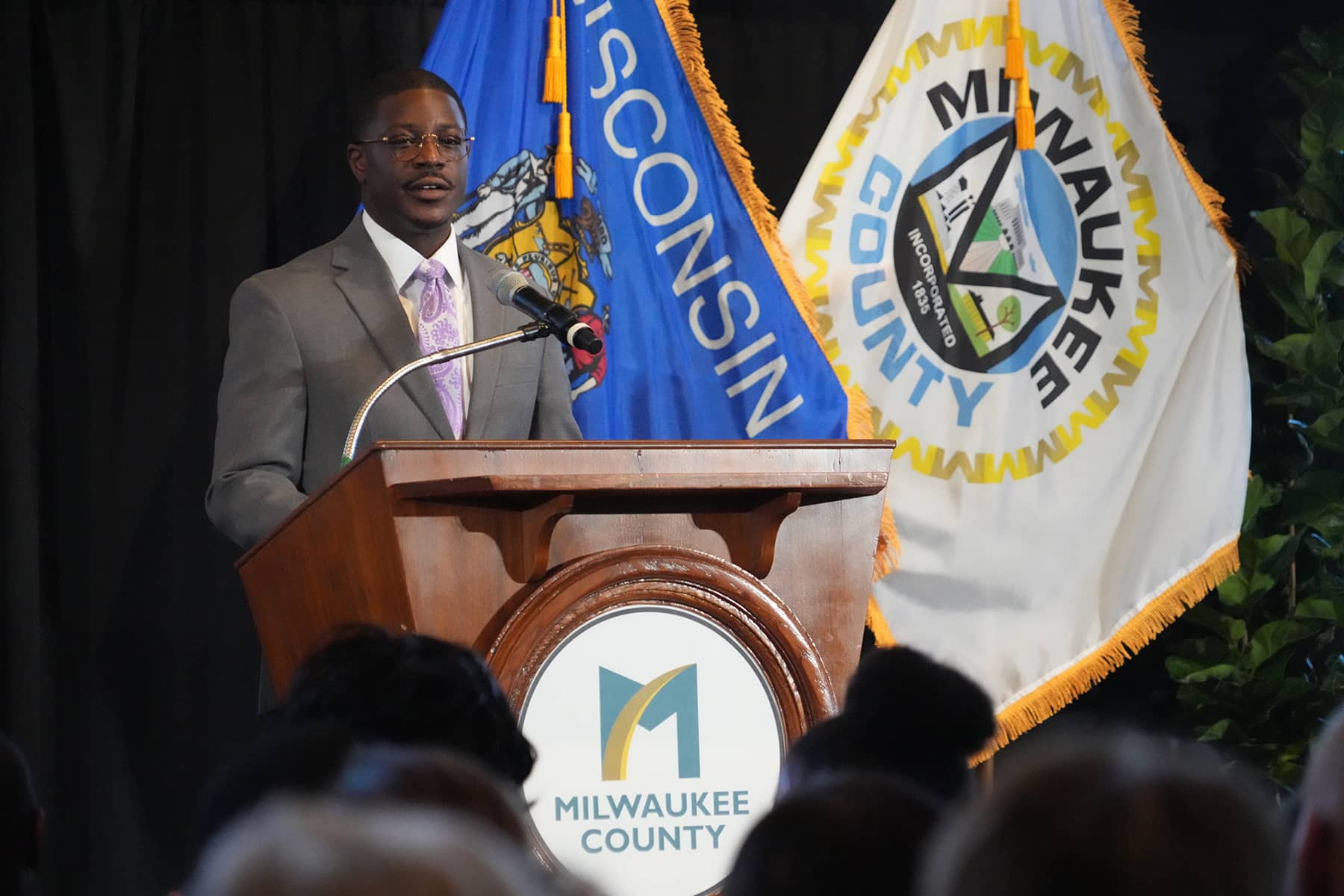
Milwaukee County Executive David Crowley delivered his 2025 State of the County Address at the Marcus Performing Arts Center on March 26, highlighting ongoing partnerships, economic development initiatives, public safety proposals, and efforts to improve community health services.
Throughout the speech, Crowley stressed collaboration as the key to what he described as continued progress from “A” to “Z,” meaning from the Airport to the Zoo. He also shared his goals for advancing Milwaukee County through public, private, and nonprofit cooperation. Crowley emphasized a strategy built around partnerships, “Because we work together, we can achieve great things.”
MAJOR INVESTMENTS FROM THE AIRPORT TO THE ZOO
Crowley highlighted new job-creating projects underway at General Mitchell International Airport, including a “state-of-the-art air cargo facility made possible through a public-private partnership” that he said will support the regional economy “at zero cost to local taxpayers.”
The county is also pursuing a revitalized international terminal with backing from business and union partners, including Milwaukee Tool, the Wisconsin Center District, and the Greater Milwaukee Committee.
More than 6 million passengers traveled through Mitchell Airport in 2024, according to Crowley, as part of ongoing efforts to expand routes and improve operations.
At the Milwaukee County Zoo, upgrades include a “revitalized habitat for our Humboldt Penguins” and a new Adventure Africa Rhino Exhibit set to open later in 2025. Crowley said his administration would soon release a “strategic plan that will detail future projects to engage and educate Wisconsin families.”
HOUSING AND DEVELOPMENT FOR SUBURBAN EXPANSION
Crowley said Milwaukee County has invested over $45 million into affordable housing projects since he took office, with developments underway in seven municipalities.
He cited the “County’s first-ever affordable subdivision for homeownership in Oak Creek” and a federally funded project in Franklin “for adults with intellectual and developmental disabilities.” In the King Park neighborhood, the county is “wrapping up the development of 100 brand new homes for first-time homeowners” with Habitat for Humanity and the Emem Group.
“These projects range from developments that support our unsheltered homeless residents all the way to homeownership,” Crowley said.
He stated the initiatives would generate more than $27 million in property tax revenue and emphasized the importance of “buy-in from our local leaders.”
TRANSIT SYSTEM TURNS 50 WITH A STRATEGIC OVERHAUL
The Milwaukee County Transit System marked its 50th anniversary this year, with plans to add 30 modern buses and implement a new strategic plan “aimed at improving customer service, deepening community partnerships, strengthening collaboration, and securing MCTS’ financial future.”
Crowley noted improvements to safety, referring to the MCTS in-house public safety department and its positive reception. He also shared the story of a bus operator who rescued a barefoot child from traffic during cold weather, describing it as “one of the many ways our MCTS bus operators consistently step up.”
VIOLENT CRASHES UP DESPITE FEWER COLLISIONS
While total car crashes in Milwaukee County have declined 14% since 2019, Crowley reported that “fatal collisions have actually increased by 34%.”
He said a new countywide road safety strategy will “address high-risk roadways, eliminate traffic deaths and injuries, and improve the health and safety of our entire population.” A second phase of the county’s Motor Vehicle Collision Dashboard will also help officials “tell the story of what this data really means for our residents.”
RECORD OPIOID SETTLEMENT FUNDS AND OVERDOSE DROP
Crowley reported a 30% decline in opioid-related overdose deaths in Milwaukee County in 2024 compared to 2023, citing newly released dashboard data.
He said the cause of the decline remains unclear, stating that “the data alone doesn’t tell us if this decline is due to fewer people overdosing or greater access to harm reduction supplies, such as naloxone,” but he emphasized, “fewer people are dying of overdose in Milwaukee County.”
Crowley attributed the progress in harm reduction to partnerships and investment. He said the county has secured “the largest amount of opioid litigation settlements by any local government in the history of Wisconsin,” using those funds for outreach, supplies, and education. He described one effort where staff canvassed homes in a high-overdose neighborhood, distributing tools and building trust.
EXPANSION AND INNOVATION OF MEDICAL CARE SERVICES
The Mental Health Emergency Center served thousands of residents in 2024 through a “first-of-its-kind public-private partnership” with regional health systems. A navigator program and new behavioral health access clinics served over 1,100 people last year, a 19% increase.
Crowley praised the launch of whole blood transfusions administered in the field by EMS, calling it “literally the difference between life and death.” He said Milwaukee County’s EMS is the first in Wisconsin to offer the service and one of the first fire-based systems in the country to do so.
PUBLIC SAFETY FACILITY PROJECTS UNDERWAY
Crowley said a new Forensic Science and Protective Medicine Facility in Wauwatosa will house the county medical examiner and support EMS operations. He also called for the demolition and replacement of the century-old Public Safety Building, which he described as “crumbling” and “inefficient.”
He said shared hallways and outdated layouts could create preventable “security incidents and mistrials,” and that the project needs state support. “Nearly 80% of Milwaukee County’s property tax levy is already dedicated to state-mandated services,” he said.
Crowley thanked Governor Tony Evers for proposing $25 million for the project in his capital budget and said the county is working with the sheriff, courts, and district attorney to move the plan forward.
CENTRAL PILLARS OF THE MILWAUKEE COUNTY EXECUTIVE’S AGENDA
Crowley reaffirmed his administration’s goal of becoming the “healthiest county in the State of Wisconsin,” citing his integrated “No Wrong Door” model for health and human services. The upcoming Marcia P. Coggs Health and Human Services Center will become the central hub for that approach when it opens on June 13.
“For the first time in Milwaukee County history, DHHS will have a building designed specifically to deliver health and human services,” Crowley said.
SENIOR PROGRAMS EXPAND AS THE COUNTY’S POPULATION AGES
Crowley emphasized the county’s work supporting its growing population of older adults through “funding for senior center programming, nutrition initiatives, and elder abuse prevention.” He also noted the hiring of additional staff at the Milwaukee County Aging & Disability Resource Center and a $4 million state grant awarded for renovations at the Clinton & Bernice Rose Senior Center.
Milwaukee County became the first in Wisconsin to join the AARP Network of Age-Friendly Communities, and blood pressure monitors are now available at senior centers through a partnership with the American Heart Association.
NEW JUSTICE INITIATIVES SHOW EARLY RESULTS
Crowley highlighted the Credible Messengers Program, which provides mentorship and job access for youth involved with or at risk of entering the criminal justice system. He cited that “78% of those served had no new offenses while involved with the program,” and that among non-justice involved youth, “87% of these participants have no new offenses or system involvement.”
He also spotlighted the Advance Peace Model, designed to reduce gun violence by identifying high-risk individuals and connecting them with support and intervention. “We’re going to keep working with our partners to end the epidemic of gun violence – because lives depend on it,” he said.
AFFORDABLE HOUSING LINKED TO REGIONAL GROWTH
Crowley tied affordable housing to broader regional economic development, calling it “an important part of economic development in these communities.” He said housing investments are “generating more than $27 million of property tax revenue” and creating “family supporting jobs.”
He credited municipal leaders in Oak Creek and Franklin for supporting suburban housing efforts, and called for additional partners. “We’ve realized great results by collaborating with organizations like Acts Housing,” he said. “I want more folks to join us in this work, because it’s working.”
Crowley added that the county’s Housing First approach had saved taxpayers over $30 million since its launch and helped Milwaukee County achieve “the lowest unsheltered homelessness count per capita in the United States.”
CLIMATE ACTION PLAN TARGETS NET-ZERO BY 2050
Crowley announced the completion of the county’s new Climate Action Plan, a framework for reaching net-zero carbon emissions in county operations by 2050.
“The Climate Action Plan will deploy policies and procedures to reduce emissions and support job creation efforts, neighborhood well-being, and more,” he said.
He noted that the county had already achieved a 46% reduction in greenhouse gas emissions and said the plan would emphasize avoiding new sources of emissions and implementing energy efficiency practices.
WORKFORCE DEVELOPMENT INTERSECTS WITH CLEAN ENERGY AND PARKS
Crowley mentioned the success of the Lighting Jobs Program, which provided energy-efficiency installation training for local youth. One participant, Justin Rodriguez, was hired full-time at a minority-owned contracting firm after graduating from Bradley Tech High School.
Crowley also discussed Milwaukee County Parks as economic and quality-of-life assets. He said new projects include renovations to the Underwood Creek Parkway and the South Shore Breakwater, along with a goal of adding 10 miles of new trails.
EQUITY INVESTMENTS FRAMED AS ECONOMIC EFFICIENCY
Crowley defended equity-based policymaking as fiscally responsible and widely beneficial. “We believe that equity-based policies benefit everyone, not just those harmed by systemic oppression,” he said.
“When outcomes improve for historically marginalized individuals and groups, fewer people will require services and support,” he continued. “This saves taxpayer dollars and allows our resources to have a greater impact.”
He said his administration expanded the Office of African American Affairs into the Office of Equity to reach “older adults, veterans, people with disabilities, and individuals of all races, genders, and religions.”
CROWLEY WARNS AGAINST CUTS TO FEDERAL SERVICES
In the final portion of his address, Crowley criticized proposed federal cuts to Medicaid, veterans services, the Department of Education, and programs for marginalized communities.
“As we all know, there is new leadership in Washington DC. And here’s the deal: I’m willing to work with anyone if it means we can deliver results for working families in Milwaukee County,” Crowley said. “But I do not agree with taking away programs and services that people rely on. I do not believe cuts to programs like Medicaid do anything to support families, children, people with disabilities, and seniors. I do not believe service reductions and layoffs at federal agencies like the VA do anything to support our veterans and their families. I do not believe that eliminating the Department of Education does anything to help our kids succeed and live healthy lives. I do not believe taking away tools that support historically marginalized businesses and workers does anything to lift up our communities and deliver prosperity for families and children. I do not believe that targeting members of our immigrant community does anything to keep our economy running, grow our population, and foster safer neighborhoods.”
A FOCUS ON PARTNERSHIPS
Crowley closed his address by emphasizing the role of collaboration in shaping the county’s future, saying that partnerships remain the driving force behind Milwaukee’s progress and its role in the state’s broader success. He said Wisconsin’s future depends on a shared commitment to cooperation, mutual understanding, and pragmatic action.


